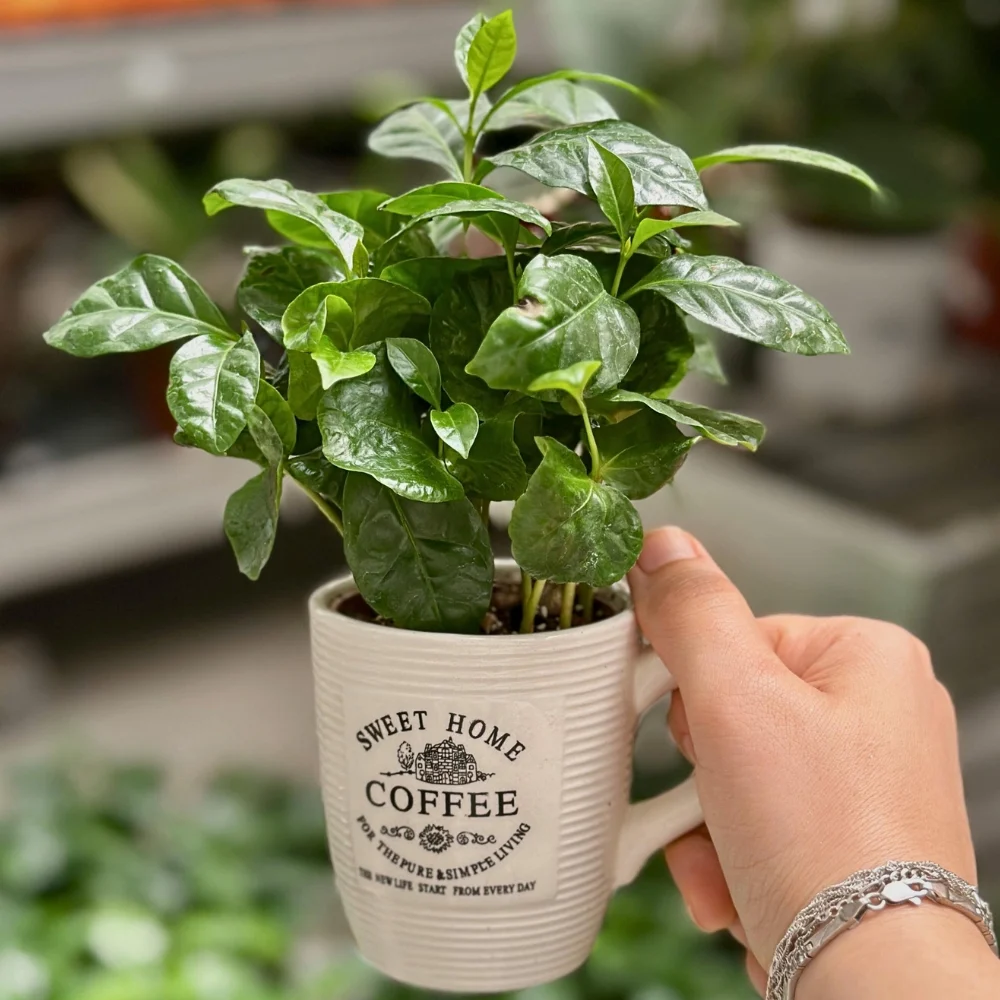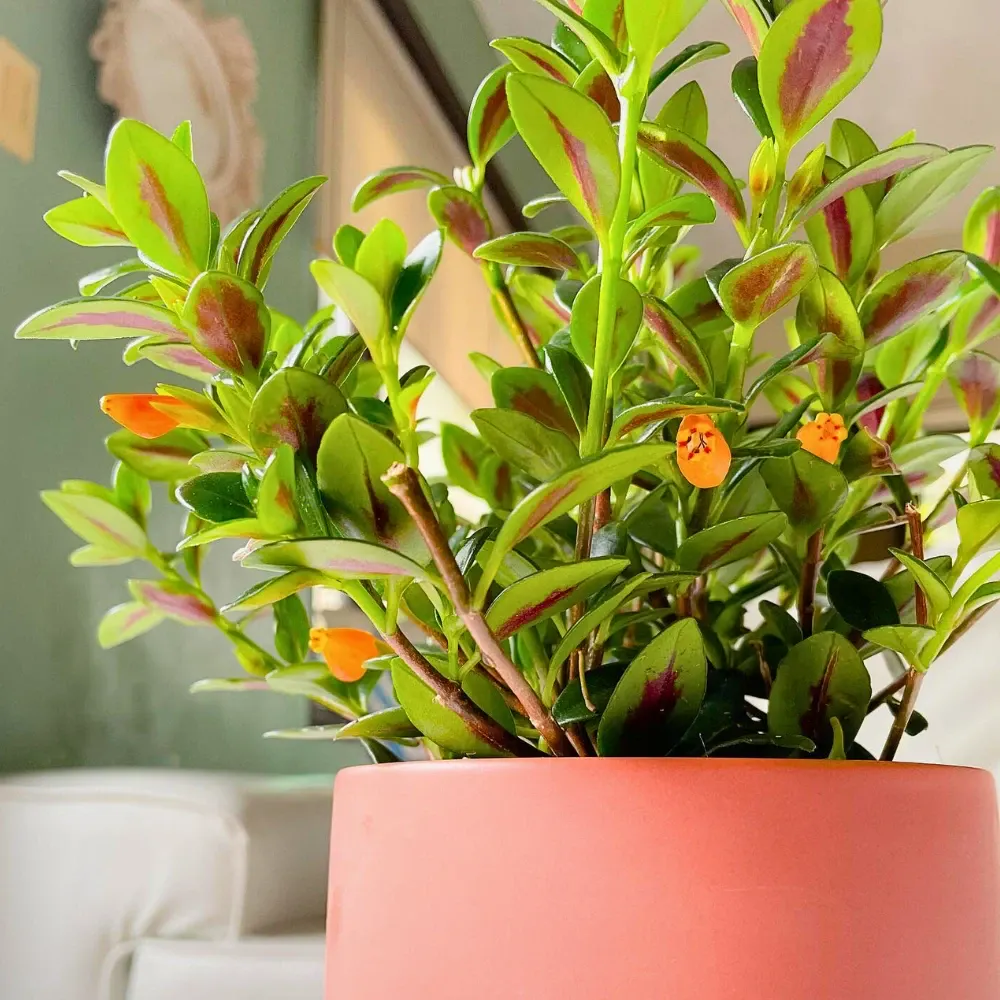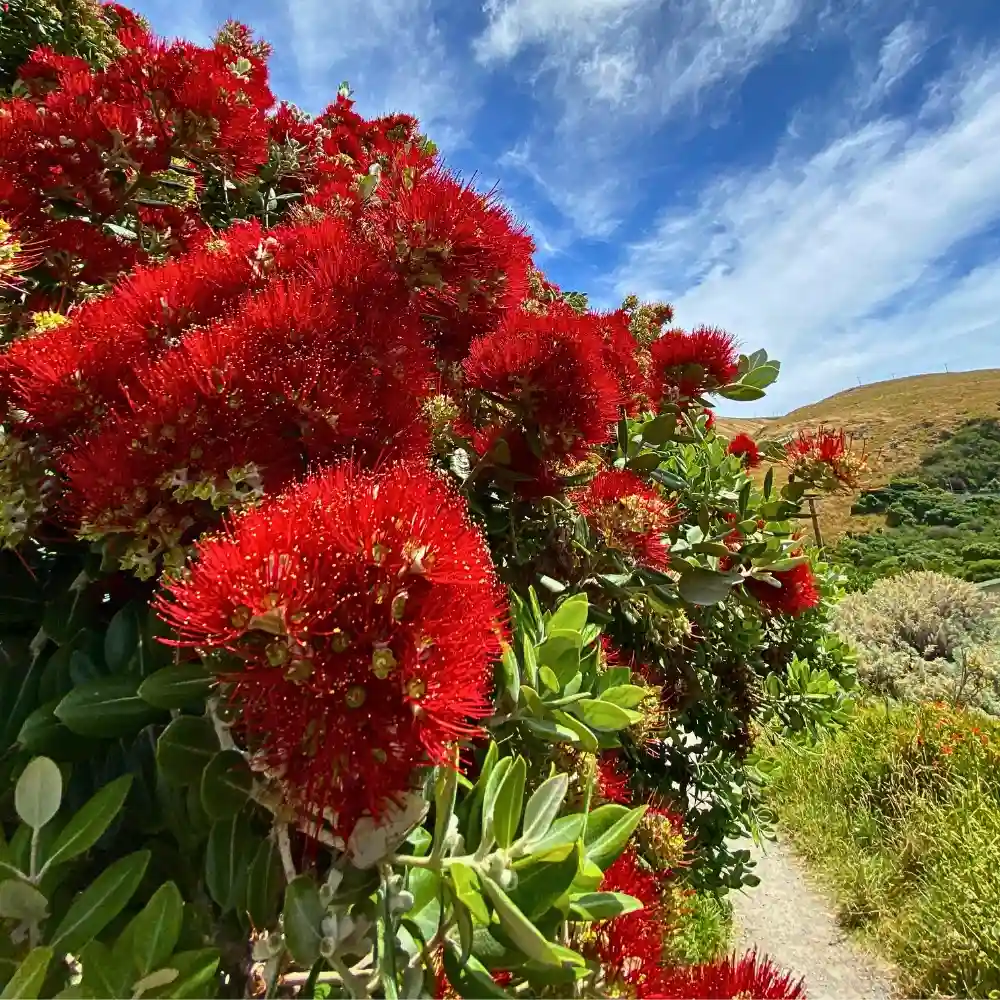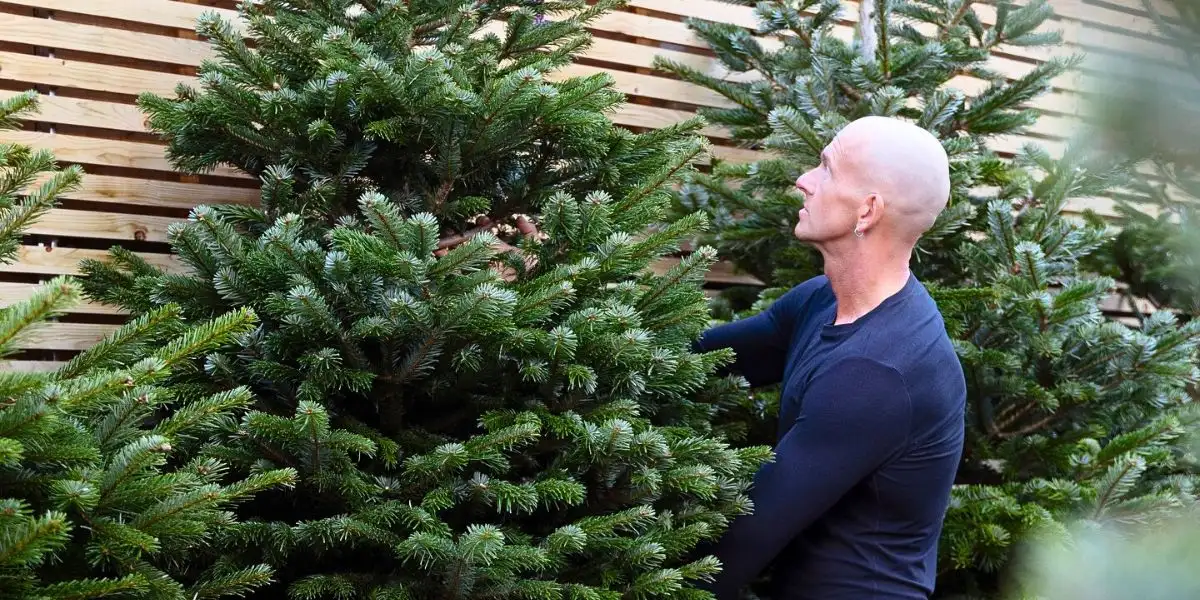The Christmas cactus has become a cheerful addition to many homes, especially during the holiday season, due to its colorful flowers that flourish in winter. Although cacti are often associated with arid conditions and desert environments, unlike other desert cacti, Christmas cacti originated in the tropical rainforests of Southeastern Brazil, and therefore prefer more humid environments.
So, here’s more that you’d want to know about this cactus variety, caring for the Christmas cactus, and why you need to have it as part of your indoor and outdoor spaces, especially to brighten up the upcoming holiday season!
The Beauty of the Christmas Cactus (Schlumbergera) for the Holidays
First things first—what is a Christmas cactus? This plant also goes by its official botanical name, Schlumbergera. For every season, Christmas, Thanksgiving, and Easter, there are three types of cacti for the occasion. There are the Christmas cactus, Thanksgiving cactus, and Easter cactus. Each flowers around the time of the holiday it is named after. Hanging branches of flat green leaves and rounded teeth characterize the Christmas cactus.

The Christmas holiday cactus produces red, pink, white, or purple flowers at the tips of these branches, which can grow up to 1 meter (3 feet long). Each flower lasts several days, though the entire flowering period lasts about two weeks. So, if you're considering filling up your house with holiday plant goodies, treat yourself to these 15 of the most popular Christmas plants and flowers.
So, what's the essential information on this beautiful houseplant, and how should you care for it to keep it flowering for years? If you’re keen on this, then pay close attention to these Christmas cactus care tips.

Essential Growing Requirements and How to Care for Christmas Cactus
Learning how to care for a Christmas cactus is relatively simple once you understand their basic requirements regarding the amount of light they need, at what temperature they thrive best, what type of soil they require, how many times they need to be watered, and so on. Let's start with the basics: light, soil, and water. These conditions should basically mimic those of this plant's native tropical forests' habitats.
Light Requirements for Your Christmas Cactus
When it comes to its best flourishing moment, the Christmas holiday cactus has very specific lighting requirements. Place the plant near a window where it will receive bright, indirect light for the best results. So that discoloration does not occur, the light should be filtered. Morning sun from an east-facing window works especially well for caring for a Christmas cactus.

Choosing the Right Soil Mix
These dazzling and firework-looking beauties, like many other plants in the cactus family, dislike having 'wet feet', which is why you should use well-draining soil. Plant professionals recommend using a soil mix that is specifically designed for succulents and cacti. When you care for Christmas holiday cactus plants, proper drainage is essential to prevent root rot.

Water Requirements and How Often to Water Christmas Cactus
When it comes to the water requirements to best take care of your Christmas cactus, you must remember that this species dislikes being as dry as some of its more arid relatives. Water when the top third of the soil feels dry, but cut back in the fall to encourage flowering. Many people wonder how they should care for a Christmas cactus when it comes to watering—the key is finding the right balance. Never let the soil become too dry, but also avoid overwatering.

Fertilizer for Your Christmas Cactus
You can fertilize your Christmas cactus with any general liquid or granular fertilizer that has a balanced NPK (nitrogen, phosphorus, and potassium) ratio. The fertilizer should be applied during the growing season, generally spring and summer, according to experts. Keep in mind that during the active growth period, you should fertilize it every two weeks. Stop fertilizing about one month before you want flowering to begin (typically around October). Essentially, a balanced houseplant fertilizer regimen works perfectly.

The Ideal Temperature for Christmas Cacti
While these plants look their best in the winter, they don't like it when it gets too cold. Temperatures between 15-21 degrees Celsius (60-70 degrees Fahrenheit) are ideal for Christmas cactus, but it can tolerate temperatures as low as 10 degrees Celsius (50 degrees Fahrenheit). If your home is particularly dry, keep a shallow bowl of water nearby to help humidify the air, as they do prefer warm temperatures. Cooler nighttime temperatures in fall help trigger bud formation.

How to Prune Your Christmas Cactus
Pruning Christmas cactus is usually unnecessary unless you want to keep your plant small. To prune, simply twist or clip off where two stem segments connect. Plant professionals share that the best time to do this is right after the plant finishes flowering, usually in January or February. Since many plant parents wonder how to care for Christmas cactus when it comes to pruning, the answer is minimal intervention unless shaping is desired.

How to Get Your Christmas Cactus to Flower Again
Your cactus requires the proper conditions for those stunning flowers to appear. This includes long, dark nights and short days. To get your Christmas cactus flowering again, make sure to place your cactus in a completely dark area (like the garage or basement, where no house lights will be on) for 12-15 hours each night for six to eight weeks before Christmas, and then move it to a sunny spot to expose it to 10 hours of daylight.

Three Key Steps for Christmas Cacti Reblooming Success
- Provide uninterrupted darkness as these plants are short-day plants, meaning they need evenings of complete darkness in late summer and fall to set flower buds. Even brief exposure to artificial light at night can prevent bud formation. Count back about eight weeks from when you want flowering to start and begin the darkness treatment.
- Cool evenings and cooler nighttime temperatures help trigger bud formation. Aim for temperatures in the 13-18°C (55-65°F) range at night. You can achieve this by placing your plant outdoors in early fall or in a cooler room of your house.
- Reduce watering in the fall. If you notice that buds do not form for some reason by October, reduce watering and allow the top half of the potting mix to dry out between waterings. This mild stress helps encourage bud development.

Once buds appear, resume normal watering—otherwise the buds may drop before opening. If you notice that buds do not form for some reason, move your plant closer to a window, as this is your plant's way of telling you that its daytime light is insufficient.
How to Propagate a Christmas Cactus
Christmas cacti are very easy to propagate, but it is best done during the spring. If you wish to take cuttings to share, ensure the pieces you break off have at least two or three segments. Follow these steps to propagate your flowering houseplant:
- Clip a piece of cactus with two to three segments
- Let the segments sit for a day or two to callous over
- Fill a pot with a cacti and succulent mix
- Make a hole in your soil and place the clipping in the hole
- Keep the pot in a warm, bright place, keeping the soil moist. In a few weeks, they should root and start to put out new growth

You can also root cuttings in water before potting them up. This is an excellent way to share your plant with friends and family, creating heirloom plants that can be passed down through generations.
Common Problems When Caring for Christmas Cactus
While Christmas cactus is known for being low maintenance, there are a few problems you may encounter when caring for the houseplant.

Fungal Diseases
Starting with fungal diseases, they may occur and often appear as yellow, brown, or black spots on the stems. These diseases are most commonly associated with the plant being kept too moist, in insufficient light, or in a room with poor airflow. If your plant is showing spotting of the stems, try providing more light if possible, such as placing an LED lamp over the plant to augment natural light and ensure it's not being overwatered.
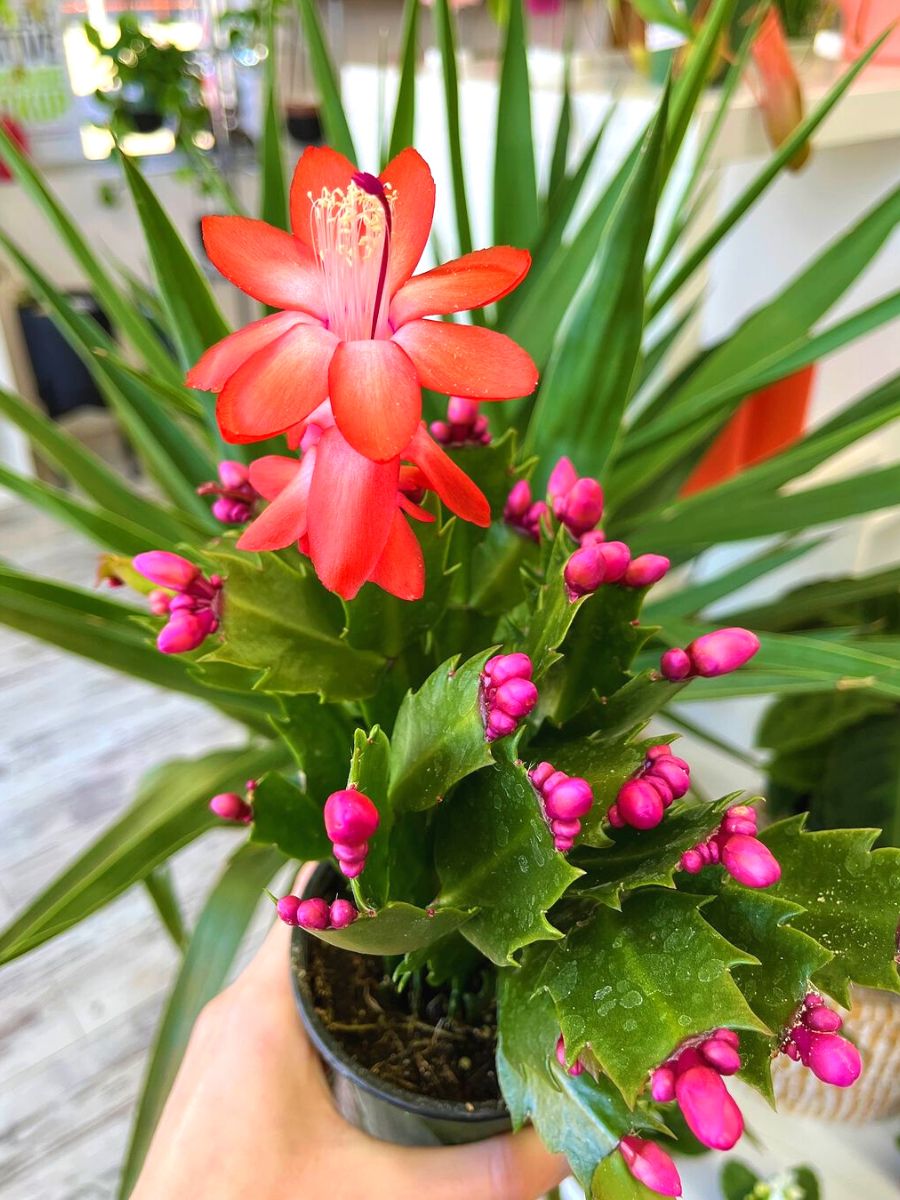
Mealybug Infestations
On the other hand, mealybugs can be a major issue for this houseplant. Mealybugs can suck the nutrients from Christmas cactus and produce a sugary substance called honeydew, which can lead to an increase of ants inside the home that target the plant. This honeydew production can lead to sooty mold on your cactus, which leaves a black, unsightly residue on the plant over time. To avoid mealybugs, routinely check for signs of infestation and treat them with an insecticidal soap spray, which will help to control and eliminate the insects on contact.
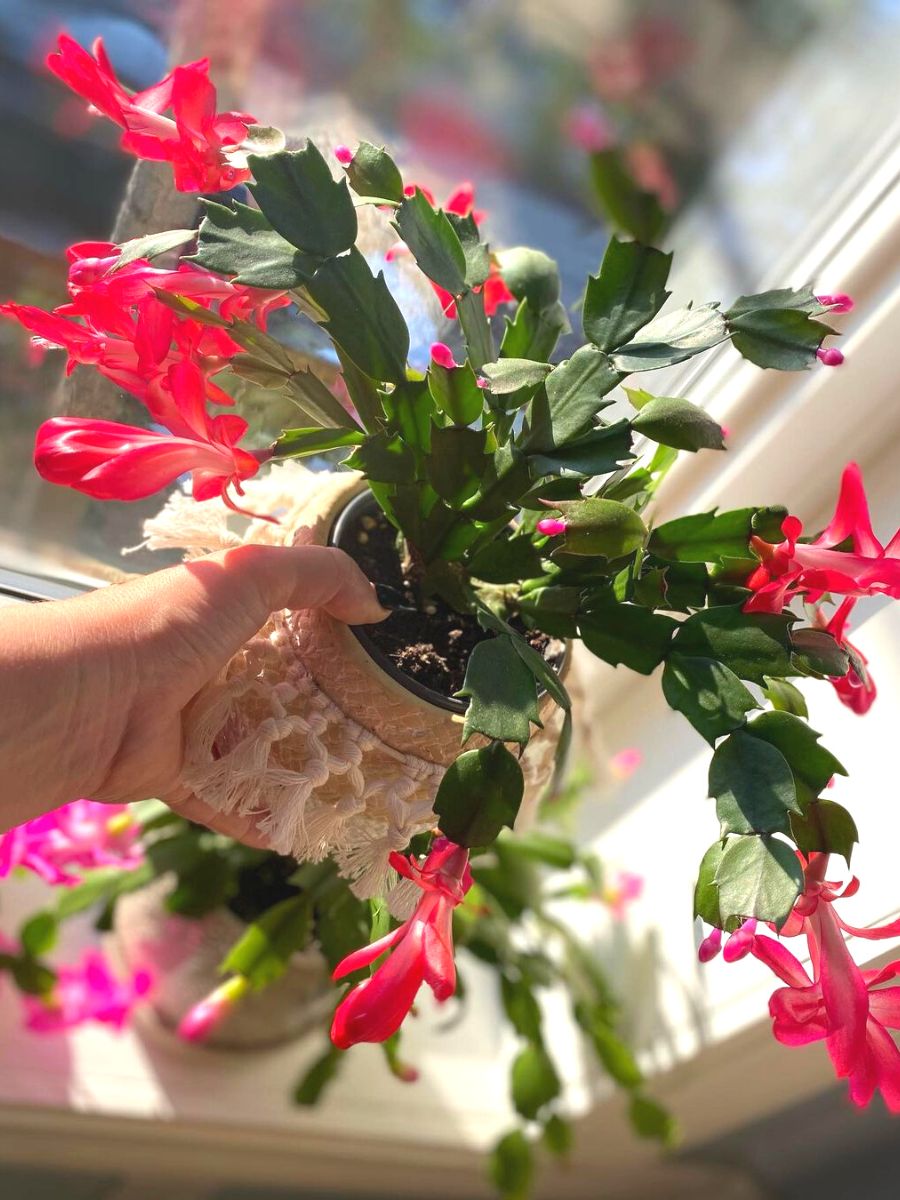
Root Rot Prevention
Lastly, root rot can also occur when having a Christmas cactus around. Root rot refers to when the roots suffocate, die, and rot, and can occur if the plant is overwatered. The easiest way to prevent root rot is to feel the potting mix before watering to ensure it needs moisture and you're not adding too much water. If your plant is suffering from root rot, helping the soil get back to optimal moisture levels is key. Make sure your pot has drainage holes at the bottom.
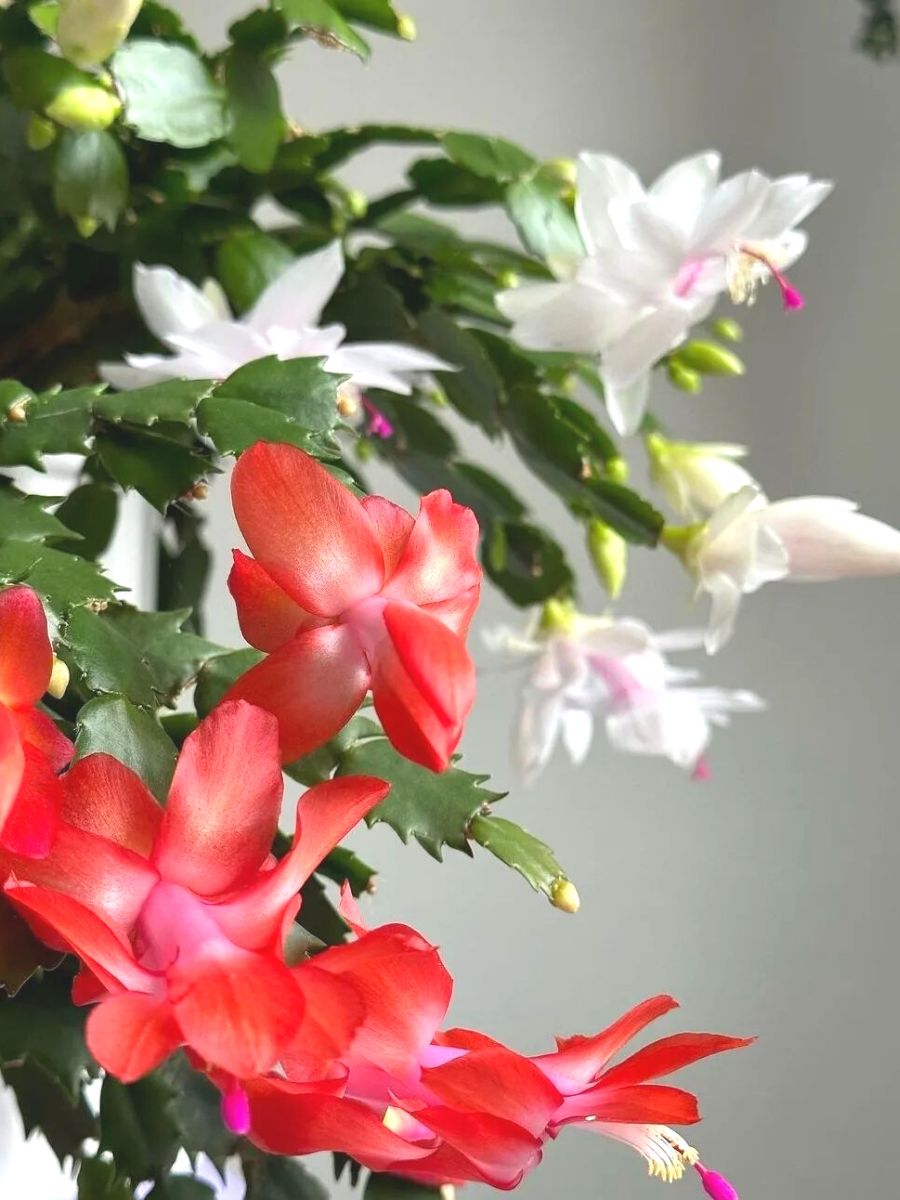
Bud Drop Issues
One frequent question about how to care for a Christmas cactus involves bud drop. Buds dropping off usually indicate stress from inconsistent temperatures, overwatering, or sudden environmental changes. When buds are forming, maintain stable conditions and avoid moving your plant frequently.
Limp or Wrinkled Leaves
If your plants leaves appear limp or wrinkled, this typically means the potting mix has dried out. Water promptly, and the segments should plump back up within a day or two. However, if the plant remains limp after watering, root rot may be the culprit.

Year-Round Christmas Cactus Care Summary
Now that you know the basic care tips to make your Christmas cactus flower and show itself off during the holidays, it should be time to get your hands on one (or several) to decorate your interior spaces for the festivities. Understanding how to care for Christmas cactus throughout the year ensures your plant stays healthy and flowers reliably each season.
This colorful plant will show off its petals in a variety of colors, such as red, purple, orange, pink, and white. These vibrant blooms are sure to brighten up any space during the Christmas holiday season and beyond! With proper Christmas cactus care, these plants can live for decades and become treasured family heirlooms passed down through generations.

The key points for successful care for Christmas cactus include:
- Bright, indirect light (avoid direct afternoon sun)
- Well-draining soil mixture
- Water when the top third of the soil is dry
- Temperatures between 15-21°C (60-70°F)
- Fertilize every two weeks during spring and summer
- Provide 12-15 hours of darkness nightly for 6-8 weeks before the desired flowering time
- Cooler nighttime temperatures in fall trigger bud formation
- Reduce watering slightly in fall if buds haven't formed by October
If you want to know more about cacti varieties to incorporate in your spaces, read the article 10 Best Indoor Cactus Varieties and How to Care for Them.
Feature image by @schlumbergera_kz. Header image by Schwoaze. Reels: Christmas cactus (Schlumbergera) at Decorum grower Hofland Flowering Plants by @warja_abrosimova


